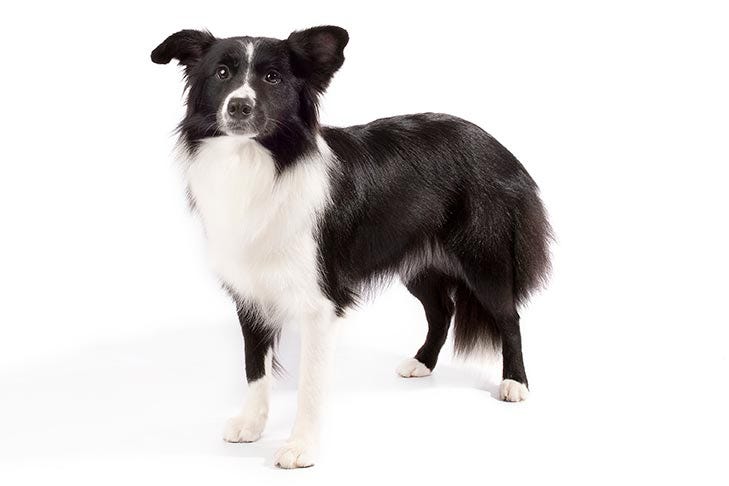This is a time of year when I think a lot about dogs.
Okay, well, let’s be honest—I think about dogs year-round. It’s a tacit understanding between my wife and I that it’s completely okay to interrupt a phone conversation to yell DOG one of us saw a dog and needed to relay that very important information.
I especially think about dogs this time of year, though.
You see, under normal circumstances, and not the perpetually-crappy circumstances we’ve lived in for some time now, tonight would be the first night of the Westminster Kennel Club dog show, a weird, regressive and problematic rich person’s folly that I unironically adore and watch religiously each year. I love watching the various breeds of dog parade into Madison Square Garden, good boys and girls all of them, and I howl with delight at some of the efforts in long-term animal husbandry that were clearly inside jokes that went too far.
There will be no dog show this evening, sadly—this year’s WKC show has been rescheduled for June, to be held out of doors in Tarrytown, New York, a concession to the current public health reality making it unwise to gather indoors for anything less-essential than a New York Knicks game.
That doesn’t mean we can’t talk about dogs today, though.
You see, part of the fun of the dog show for me is seeing the wide range of design specs and abilities on display in the nearly two hundred officially-recognized breeds on display. There’s athletic, whip-smart and eager-to-please dogs like the border collie and German Shepherd, dogs you could trust to guard your sheep, conduct a wilderness rescue or refinance your mortgage—but there’s also dogs like the Afghan Hound, a beautiful, graceful and elegant sentient wig stand.
There are many official and pseudo-scientific rankings of the intelligence of dog breeds out there, owing to the uncomfortable closeness of dog breeding to phrenology. While these are good general guides, they’re not useful for determining the specific intelligence of your dog, who might not be a pure-bred animal, or might deviate from their breed’s specific expectations.
Fortunately, I’ve devised a test myself.
First: Count the number of repetitions needed to execute a command
This is the basis of one of the most widely-accepted metrics for canine smarts, professor Stanley Coren’s 1994 book The Intelligence of Dogs. Smarter breeds naturally learn to execute commands correctly with far fewer requests than their less-bright brethren. Let’s start here.
Fewer than five repetitions: This marks exceptional intelligence, the kind seen in Border Collies, Standard Poodles, German Shepherds and Golden Retrievers. These dogs are among the brightest animals out there, and honestly? They’re a little smug about it. These dogs are quietly judging you, who takes far longer to learn things.
Five to fifteen repetitions: Coren calls these “excellent working dogs”, but includes the Welsh Corgi, who has never actually worked a day in its life. Any allegations that they are herding dogs is simply a generations-long tax scam pulled off by herding dogs’ lazy cousins. As someone of moderate intelligence who also pretends to be more useful than I am, I respect this level of dog.
Fifteen to twenty-five repetitions: This includes such working dogs as the Dalmatian, who is just smart enough to know when things are on fire.
Twenty-five to forty repetitions: These dogs are mostly just pretty and that’s fine. There are far worse stations in life.
Forty to eighty repetitions: Honestly, if you’re asking a pug to do something seventy-five times, you should probably have just done it yourself.
Eighty to one hundred repetitions: A real grab bag of lovable dullards here, from the Borzoi to the Basenji, the Beagle to the Bulldog, the Basset Hound and Bloodhound. Familiar names who are dumb as rocks: this is the Dancing With The Stars category of dogs.
Over one hundred repetitions: This category is not included in Coren’s rankings, because it reflects the dogs who have correctly identified your petty, eugenicist mind games for what they are and refuse to participate. These are the actually-smartest dogs, and they should be both respected and feared, as they have trained you, and you have failed. These dogs advance to our extended battery of testing.
Instinctive Behavior
Throw open the door and yell “GO GET IT!” Lesser dogs might return with a tennis ball, a stick, or perhaps a slow-witted squirrel. The most intelligent dogs will return having started a lifestyle Instagram brand that encourages others to “go get it”, earning them a healthy income that can be used to purchase fresh, organic squirrels.
Language skills
A dog of traditional intelligence will quickly develop a vocabulary of words like “food”, “walk”, “outside”, and “no”. This is not impressive. A truly intelligent dog will understand when you are debating what kind of takeout to get for dinner, and will subtly steer you toward Mexican. They know that you always eat too much when you order Mexican and you’ll need a walk around the block after dinner.
Problem Solving
Sell your dog a new television. Would your dog like to purchase the store’s additional protection plan on this purchase? Yes? I’m sorry, your dog just fell for the oldest trick in the book. There is literally no way a television can break in the first three years that will actually be covered by the store warranty. Bad dog. Bad.
Delayed Gratification
Surely you’re familiar with the Marshmallow Test. Well, it works on dogs too. Offer the dog a treat, but explain that it will get a second treat if it waits ten minutes. Unintelligent dogs will eat the first treat right away. Intelligent dogs will invest the treat in a risky short-term stock market play and potentially turn it into hundreds of treats.
Object Permanence
Throw a ball to the dog several times. Once you have established the game, pretend to throw the ball, but keep it in your hand. Did the dog fall for it? Of course it did. They always do, and it is always funny. This is not part of the test. This is for you.
Critical Thinking
Explain the American political system to your dog. Does it seem to understand? Yes? Your dog is a liar. None of this makes any sense. Your dog voted for a single-issue joke candidate.
Life-Saving Skills
Present the dog with a lifelike baby doll, and then simulate some kind of peril. Scream “oh no, my baby!” Does the dog spring to the baby’s rescue? Yes? This dog is a fool. No dog’s life has gotten better after the introduction of children to their home. Truly intelligent dogs know this, and will protect their own interests as proxy child.
The Final Test
Look your dog in the eyes. Ask it “are you a good boy (or girl)?” Yes? Yes. Yes they are. Yes they are a good boy (or girl).

Please tell me why your dog (or cat) is smart.









Missing in the 'takes >100 repetitions' for the beagle is that they know exactly what you want them to do, but refuse to do so.
My boy Winston is a Coton de Tuléar (plural is Cotons de Tuléar). He’s not good at tracking, or following commands, or doing anything other than being a fluffy good boy.
We feed him, bathe him, walk him, and play with him, and he doesn’t have to do anything else, and he loves us!
I work like 50-60 hours every week.
You tell me who is smart one here.